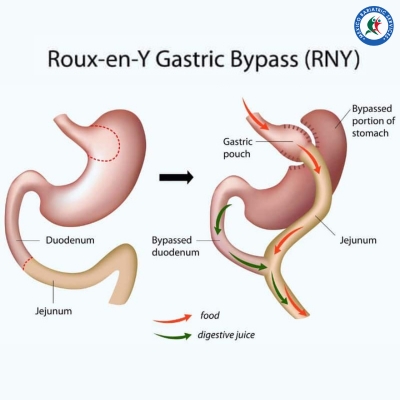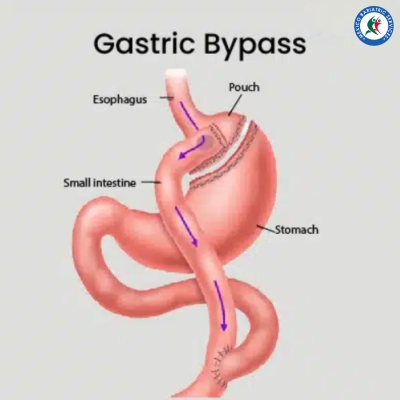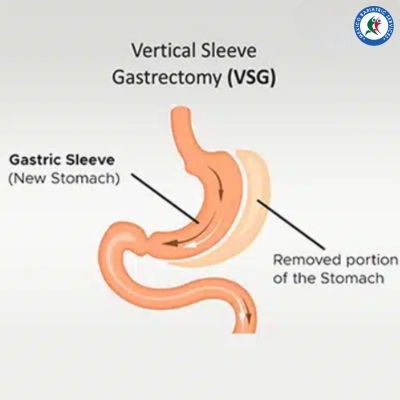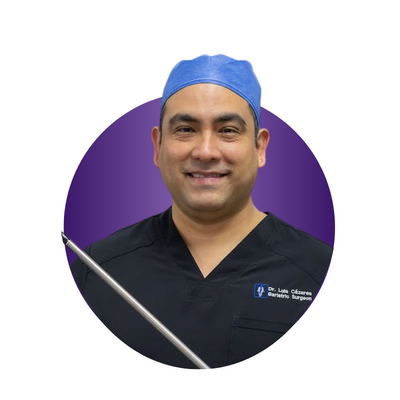Gastric Bypass in Tijuana: Affordable and Safe!
Are you unable to lose weight despite dieting and exercising? A gastric bypass in Tijuana can help you shed those extra pounds and save up to 71%. Keep reading to learn about the cost, best surgeons, an all-inclusive package, and more.
Gastric Bypass Tijuana, Mexico Reviews
Explore the feedback from our patients in the testimonials shared below.
Happy Gastric Bypass Patients: Before and After
Witness the results of gastric bypass in Mexico through captivating before and after pictures of Wendy Medrano and Lisa Mae from the US.


Curious about the cost of weight loss surgery in Mexico? Read below to find the answer.
How Much Does Gastric Bypass Cost in Tijuana?
The cost of a gastric bypass in Tijuana is $5,495. For self-pay patients in the US & Canada, it can cost $18,995 and $20,000 (CAD), respectively.
In Tijuana, you can have significant savings of up to 71% compared to the US cost and 72% compared to Canada. Read on to learn more.
Savings on Gastric Bypass in Tijuana
| Procedure | Tijuana (USD) | US (USD) | Canada (CAD) |
|---|---|---|---|
| Gastric Bypass surgery | $5,495 | $18,995 | $20,000 |
| Mini Gastric Bypass | $5,495 | $11,900 | $16,000 |
#Prices are case-dependent
Mini gastric bypass in Mexico is also becoming a popular procedure. To know more about it follow this link.
Ready to take the first step?
What Your Price Includes
This price of gastric bypass in Tijuana includes the following.
- US and Mexico-registered bariatric nutritionists
- Pre and post-op diet guidance
- Bariatric support group
- Help with travel documentation
- Bilingual staff
- Destination support
- Ground transfers
- 1-night hotel stay
*Terms and conditions apply
However, it does not include airfare. We also have a free shuttle service from the San Diego airport to our facilities.
Americans and Canadians face high healthcare costs, even with insurance.
Gastric bypass in Tijuana is still cost-effective, even after considering transportation and other expenses.
Due to this, weight loss surgery in Tijuana is becoming quite popular.
Cancun is a more convenient option for patients residing on the east coast of the US, like Florida, due to the shorter flying time.
For such patients, Mexico bariatric services also give you the option of a gastric bypass in Cancun.
Let’s explore gastric bypass options in other Mexican cities!
Financing and Payments Methods
Financing Options
Financing weight loss surgery in Mexico is an easy task.
We offer multiple medical financing options that can quickly provide a loan to finance the bariatric procedure of your choice.
Payments Method
You can use the following method to pay for your gastric bypass.
- Debit/credit cards: VISA and Mastercard are accepted (some extra charges may apply)
Best Gastric Bypass Surgeons in Tijuana, Mexico
Mexico Bariatric Services works with the best bariatric surgeons in Tijuana.

Dr. JP Fernandez
Step forward for a healthier future!
Do I Qualify for Gastric Bypass?
If you are asking yourself how do I know if I qualify for bariatric surgery? please read below to find out:
- Your efforts to lose weight with diet and exercise could have been more productive.
- Your BMI is 40 or higher.
- Your BMI is 35 to 40, and you have severe weight-related health problems, such as type 2 diabetes, high blood pressure, or severe sleep apnea.
- In rare cases, our doctors may approve a BMI of 30 and higher.
- Gastric Balloon may be approved for a BMI of 27 and above.
- The minimum BMI for gastric sleeve in Tijuana is 40.
- However, you will be a suitable candidate for gastric sleeve if your BMI is 35 and you are suffering from diabetes or hypertension.
What is the Procedure for Gastric Bypass in Tijuana?

A Step-by-Step Explanation of Gastric Bypass Surgery
- During gastric bypass surgery, the stomach is divided into a smaller upper part and a larger bottom part.
- The smaller part, resembling the size of an egg, will be used for digestion.
- The larger bottom part is bypassed, so it will no longer store or digest food.
- The small intestine is divided during the surgery. Then, the smaller stomach pouch is connected to the divided small intestine. This connection allows the food to pass through.
- A part of the small bowel that drains the bypassed stomach is linked to the small bowel about 3-4 feet downstream.
- This creates a bowel connection resembling the shape of the letter Y.
- Over time, stomach acids and digestive enzymes from the bypassed stomach and the first part of the small intestine mix with the food.
- The patient recovers in the hospital for 2-3 days.1
Is The Surgery Reversible?
No, it is not reversible. However, a failed bypass can be revised by winding a gastric band around the stomach pouch.
How Much Weight Will I Lose Post Surgery?
Weight loss after gastric bypass can be up to 80% of the excess weight.
The weight loss rate decreases as you lose more weight. So you’ll lose weight rapidly in the first few months compared to the later months.
From 6 to 18 months post-op, an individual can lose up to 78% of their weight.
The Recovery Timeline
After surgery, the hospital stay can be anywhere from 1 to 5 days. But this can vary from case to case.
We have listed below everything you need to know after your procedure for a safe recovery.
Post-Discharge instructions:
Upon leaving the hospital, follow these instructions for a successful recovery:
- Diet: Gradually move from liquid to soft and solid foods over six weeks.
- Nutritional Supplements: Add daily dietary supplements as per your doctor’s advice.
- Hydration: Ensure proper hydration by consuming 1.5 to 2 liters daily to prevent dehydration.
- Gradual Exercise: Walk daily to cover 2 miles by the sixth week.
- Activity Restrictions: Avoid strenuous and heavy lifting for 3 to 6 weeks.
- Driving: Hold off on driving until you are off all pain medications, typically around one-week post-surgery.2
How Do I Eat After Surgery?
- Always include a minimum of 60 gm of lean protein in your diet. Lean protein can be obtained from chicken, fish, pork, cottage cheese, and eggs.
- Do not skip meals. Instead, have 6-8 mini-meals with small portions to prevent your pouch from filling up too fast.
- Drink 6-8 cups of caffeine-free, non-carbonated beverages in a day. Include skim milk and juices in your diet.
- Certain vitamin and mineral deficiencies can occur in gastric bypass patients post-op. A daily multivitamin and calcium supplement is a must.
What Can I Expect After Gastric Bypass?
After you make the life-changing decision to get a gastric bypass, you will also need to make lifestyle and diet changes.
Lifestyle Changes
You can return to work 2-4 weeks after gastric bypass.
You would have to be prepared to take supplements all your life for nutritional requirements.
Dietary Changes
In the beginning, you’ll be able to tolerate only clear liquids, then pureed foods.
Gradually, you can move on to solid foods. The gastric bypass diet is not very different from the other bariatric diets; you must be careful about your nutrient intake.
You should follow the 30-minute rule and eat small meals with dime-sized bites every few hours. Watch the video below to learn more.
Emotional Stress
The drastic changes in your lifestyle could cause you to feel disoriented and hopeless. But you’ve made a good decision for yourself!
Before you go for the surgery, take a couple of months to ease yourself into the ways of gastric bypass. This will help you to cope better.
Do keep in touch with a mental health professional to help you cope with your lifestyle and body changes.
The drastic diet changes, as well as weight loss, can cause some patients to develop temporary mental issues. Insulate yourself against these.
How Will Exercise Post-Op Help Me?
Exercise maximizes weight loss and helps to maintain a healthy body. Some reasons to exercise include:
- Increases the metabolic rate and burn fat easily
- Improves mood and feeling of well-being by secreting endorphins (pleasure chemicals) into your body
- Builds and maintains healthy bones, muscles, and joints
- Decreases muscle breakdown while losing weight
- Helps alleviate constipation
- It helps reduce the feeling of depression and anxiety.
Returning to Work After Surgery
- Most people can return to work 2-4 weeks after the surgery.
- Your surgeon will advise you when to return to work after bariatric surgery.
- If you have a desk job, you could start to work 1- 2 weeks after surgery. Patients who have more physically demanding jobs would need more time.
- Keeping yourself hydrated with at least 64 oz of water is most important. Apart from the water, you could opt for low-calorie, sugar-free and decaffeinated fluids.
- Keep a tab on the nutrients that you’re getting per day. Since your stomach can’t tolerate food, your liquid diet must fulfill nutritional needs.
More Benefits of Gastric Bypass Surgery in Tijuana, Mexico
Some of the benefits of gastric bypass surgery are described below:
- Patients lose a significant amount of weight after surgery.
- It reduces the risk of obesity-linked diseases like hypertension, diabetes, and heart disease.
- Gastric bypass can lower the risk of death due to obesity by almost 40%.
- It reduces the risk of high blood cholesterol and may relieve GERD and sleep issues.
- It also helps alleviate lower back pain, knee damage, and joint pain associated with excess body weight.
- The risk of venous thromboembolic disease is also reduced.3
Gastric Bypass vs Gastric Sleeve


When choosing surgeries, patients may be undecided about the best surgery for them. Gastric Sleeve in Tijuana is rapidly becoming a popular surgery.
To clear your doubts, read below for the differences between the gastric bypass and gastric sleeve.
Differences Between Gastric Sleeve and Gastric Bypass
| Gastric Sleeve | Gastric Bypass |
|---|---|
The surgeon permanently removes about 80% of your stomach. | The surgeon creates a small stomach pouch by removing most of your stomach and the first part of your small intestine. |
One-step procedure | Two-step procedure |
Less Complicated | More Complicated |
| After gastric sleeve, your stomach pouch can hold 2 to 5 ounces of food. | Helps to reduce more amount of weight and quicker |
| After gastric sleeve, your stomach pouch can hold 2 to 5 ounce of food. | After gastric bypass, your stomach pouch can hold approximately 1 ounce (oz.) of food, just a bit smaller than a golf ball |
| Faster recovery | Slower recovery4 |
Next, let’s read about the gastric bypass risks and complications.
Are There Any Risks to Gastric Bypass Surgery?
Like any other surgery, gastric bypass surgery in Tijuana also has some long-term risks and complications like
- Bowel obstruction,
- Dumping syndrome, causing diarrhea, nausea, or vomiting
- Gallstones
- Hernias
- Low blood sugar (hypoglycemia)
- Malnutrition
- Stomach perforation
- Ulcers
- Vomiting5
Short-Term Side Effects
Some short-term risks that may occur are:
- Anastomotic leakage (leak from the surgical connection)
- Bowel obstruction (blockage of the intestines)
- Bleeding
- Blood clots
- Diarrhea or blood in the stool
- Feeling faint or dizzy
- Fever
- Infection
- Nausea or vomiting
- Stomach pain and cramping
- Stenosis (narrowing of the stomach outlet)
- Surgical complications5
The next question in your mind must be, is it safe? Let us answer it for you.
Is Gastric Bypass Safe in Tijuana?
Getting a gastric bypass in Tijuana, Mexico, is safe when you choose the right surgeon and clinic.
At MBS, we do our best to ensure you get the best treatment from experienced professionals.
MBS works with accredited hospitals and recognized surgeons. Our doctors have performed more than 5000 surgeries.
With a state-of-the-art treatment facility and experienced surgeons, you will get a safe and sound treatment.
Why Choose Tijuana, Mexico for Your Gastric Bypass?
Out of the many reasons to choose gastric bypass in Tijuana, we have listed some for you.
Affordability:
- One major advantage of gastric bypass in Tijuana is that it is much more affordable than in the US and Canada.
- The cost of a gastric bypass in Tijuana is $5,495. It can cost you $18,995 to get it done in
the US and $20,000 (CAD) in Canada. - Gastric bypass in Tijuana is 71% cheaper than in the US and 72% compared to Canada.
Language support:
- You’ll be supported by English-speaking professionals.
- Which eliminates any communication barriers during your treatment journey.
Tourist-friendly:
- In Tijuana, you can expect a friendly reception by kind locals.
- Choose Tijuana for effective treatment in a serene environment.
Best doctors:
- You get the best treatment from certified, experienced professionals.
- They have performed thousands of surgeries and have a history of excellent outcomes.
Tijuana Medical Tourism
Traveling to Tijuana
- Tijuana is based on the Californian San Ysidro US-Mexican border, on the coast of the Mexican state of Baja California.
- It is easily accessible by a 30-minute drive on Interstate 5 from the San Diego International Airport (IATA: SAN).
- You can even fly down to its own Tijuana International Airport (IATA: TIJ).
Documents Needed for Tijuana, Mexico
Passport:
- Flying down to Mexico requires you to carry your passport. Ensure that your passport has at least 2 blank pages.
- Carry your passport while entering Mexico from the US.
Visa:
- People traveling from the US, Canada, Australia, and New Zealand do not need visas for their stays up to 180 days.
- You can get a tourist card (Forma Migratoria Multiple (FMM)) on arrival from the airport.
Australians and New Zealanders: Need to carry valid proof of residence with them, like payment slips and paperwork from their respective institutions.
It is not recommended to take your own vehicle into Mexico because US car insurance isn’t valid in Mexico. You’ll have to get Mexican car insurance.
Are There Any Travel Tips for Tijuana?
You can tour Tijuana through our special packages, which include city tours and hotel stays.
Our drivers and hotel/hospital staff are bilingual. It is advisable not to drive yourself to Mexico.
However, if you’d like to tour independently, Uber cabs are a pocket-friendly way to zip through the city.
Other Helpful Resources on Gastric Bypass in Tijuana
FAQ for Gastric Bypass in Tijuana
Conclusion
Gastric bypass in Tijuana offers benefits beyond weight loss.
It can help you boost your self-esteem and eliminate weight-related health issues while saving up to 71%.



